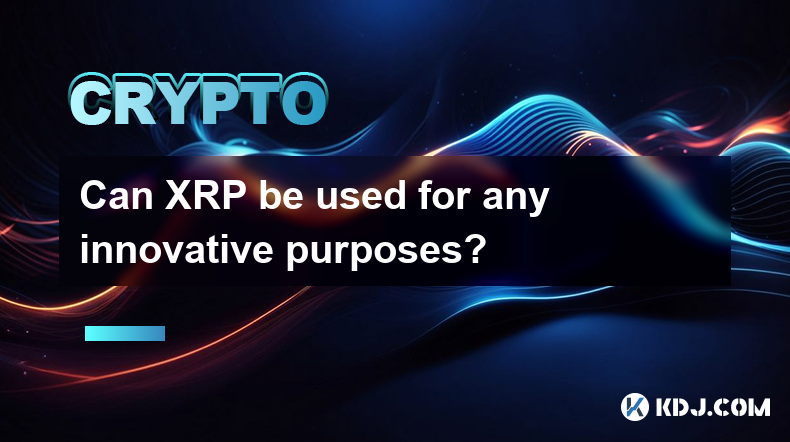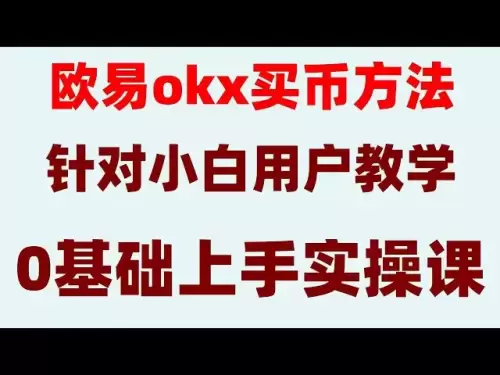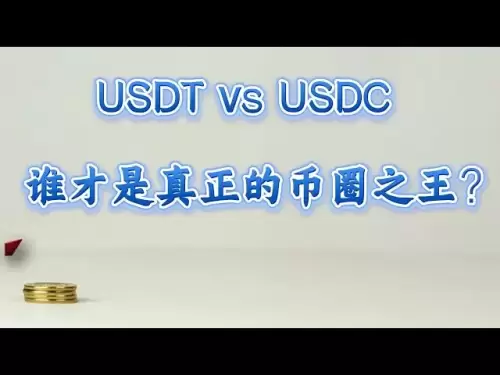-
 Bitcoin
Bitcoin $111,624.5330
1.71% -
 Ethereum
Ethereum $2,661.9924
4.53% -
 Tether USDt
Tether USDt $1.0001
-0.01% -
 XRP
XRP $2.4296
1.37% -
 BNB
BNB $686.4649
1.91% -
 Solana
Solana $179.6955
3.48% -
 USDC
USDC $0.9998
0.04% -
 Dogecoin
Dogecoin $0.2452
4.64% -
 Cardano
Cardano $0.8088
5.03% -
 TRON
TRON $0.2757
2.72% -
 Sui
Sui $3.8833
-1.26% -
 Hyperliquid
Hyperliquid $33.4256
18.16% -
 Chainlink
Chainlink $16.7364
3.86% -
 Avalanche
Avalanche $25.2566
8.90% -
 Stellar
Stellar $0.3042
3.67% -
 Shiba Inu
Shiba Inu $0.0...01550
4.43% -
 Bitcoin Cash
Bitcoin Cash $444.4337
8.76% -
 Hedera
Hedera $0.2047
3.34% -
 UNUS SED LEO
UNUS SED LEO $8.8958
0.28% -
 Toncoin
Toncoin $3.1741
2.65% -
 Polkadot
Polkadot $4.9481
4.33% -
 Litecoin
Litecoin $100.2748
3.19% -
 Monero
Monero $386.3551
-2.25% -
 Pepe
Pepe $0.0...01539
12.42% -
 Bitget Token
Bitget Token $5.2414
-0.07% -
 Pi
Pi $0.8272
-2.00% -
 Dai
Dai $0.9999
0.02% -
 Ethena USDe
Ethena USDe $1.0005
-0.01% -
 Bittensor
Bittensor $466.1175
3.57% -
 Uniswap
Uniswap $6.4294
3.42%
Can XRP be used for any innovative purposes?
XRP's versatility and scalability empowerment the exploration of groundbreaking applications across a wide array of industries, reaching beyond traditional payment and remittance use cases.
Feb 05, 2025 at 11:13 pm

Key Points:
- XRP's Unique Features and Suitability for Innovative Applications
- Real-World Use Cases of XRP in various industries, including payments, supply chain management, and tokenization
- Potential Future Innovations and the Role of XRP in the Evolving Cryptocurrency Ecosystem
- Technical Considerations and Challenges for Using XRP for Innovative Purposes
XRP's Innovative Potential:
XRP is a digital asset designed for fast, low-cost, and scalable cross-border transactions. Its unique features and capabilities make it particularly suitable for innovative applications beyond traditional payment and remittance use cases.
- Instantaneous Settlement: XRP transactions are processed in seconds, enabling real-time settlement of funds, which is crucial for time-sensitive applications.
- Low Transaction Fees: XRP transactions incur a minimal fee, typically a fraction of a penny, making it an attractive option for high-volume or micropayment transactions.
- Cross-Border Compatibility: XRP operates on a decentralized network that is not tied to any specific country or currency. This eliminates currency conversion costs and streamlines cross-border payments.
Real-World Use Cases of XRP:
Various industries are exploring the innovative potential of XRP in specific applications.
- Payments: XRP is used as a payment method by companies and individuals, particularly for cross-border transactions. For example, MoneyGram partnered with Ripple to offer low-cost and fast remittance services utilizing XRP.
- Supply Chain Management: XRP can streamline supply chain operations by providing real-time visibility into the movement of goods and funds. IBM Food Trust, for instance, integrated XRP into its blockchain platform to enhance supply chain traceability and transparency.
- Tokenization: XRP has been used to tokenize real-world assets, such as real estate and artwork. This enables fractional ownership and easier transfer of high-value assets.
Potential Future Innovations:
The future holds exciting possibilities for the innovative use of XRP.
- Central Bank Digital Currencies (CBDCs): Central banks worldwide are investigating CBDCs, and XRP's scalability and efficiency could make it a suitable underlying technology for implementing CBDCs.
- Decentralized Finance (DeFi): XRP can be utilized in DeFi applications to facilitate decentralized lending, borrowing, and other financial services.
- Internet of Things (IoT): XRP can enable micropayments and seamless communication between connected devices in the IoT ecosystem.
Technical Considerations:
Adopting XRP for innovative purposes requires careful consideration of certain technical factors.
- Scalability: XRP's consensus mechanism ensures rapid transaction processing, but it is essential to optimize the architecture of applications to handle high transaction volumes effectively.
- Network Reliability: The security and reliability of the XRP network are crucial for critical applications. Developers should implement appropriate measures to safeguard against potential vulnerabilities.
- Regulatory Compliance: Compliance with evolving cryptocurrency regulations is essential. It is important to assess the regulatory landscape and ensure compliance with applicable laws and guidelines.
FAQs:
- Can XRP be used for anonymous payments? While XRP transactions are recorded on a public ledger, the identities of the parties involved can remain pseudonymous. However, law enforcement or regulatory bodies can potentially trace transactions if necessary.
- Is XRP a good investment? The value of XRP, like other cryptocurrencies, is subject to market fluctuations. Its suitability as an investment depends on individual risk tolerance and investment goals.
- How do I get started with using XRP? A Ripple account is required to send, receive, and store XRP. You can sign up for an account with Ripple's official site or use a third-party wallet that supports XRP.
Disclaimer:info@kdj.com
The information provided is not trading advice. kdj.com does not assume any responsibility for any investments made based on the information provided in this article. Cryptocurrencies are highly volatile and it is highly recommended that you invest with caution after thorough research!
If you believe that the content used on this website infringes your copyright, please contact us immediately (info@kdj.com) and we will delete it promptly.
- The First Bitcoin Pizza
- 2025-05-23 07:40:14
- Is it finally happening again? After months of consolidation, whispers of another meme coin supercycle are making rounds
- 2025-05-23 07:40:14
- As the Market Gains Momentum, All Eyes Are on BNB (BNB), Which Is Inch
- 2025-05-23 07:35:15
- Pakistan Creates the Pakistan Digital Assets Authority (PDAA) to Regulate Cryptocurrencies
- 2025-05-23 07:35:15
- Ethereum (ETH) Shows Early Signs of an Upward Movement as It Draws Close to Key Resistance Levels
- 2025-05-23 07:30:13
- Solana Users Can Now Transact with Dogecoin Securely, Powered by Psy and Wormhole
- 2025-05-23 07:30:13
Related knowledge

What is Ethereum’s Slashing mechanism and how to punish malicious behavior?
Feb 20,2025 at 03:08am
Key PointsOverview of slashingDifferent types of slashing in EthereumIncentives and consequences of slashingIdentifying and reporting slashed validatorsOngoing discussions and potential improvementsEthereum's Slashing Mechanism: Punishing Malicious BehaviorEthereum's slashing mechanism is an essential tool for ensuring network security and punishing mal...

What is the verifier node of Ethereum and how to become a verifier?
Feb 19,2025 at 06:00pm
The Verifier Node of Ethereum: A Comprehensive GuideKey Points:What is a Verifier Node?How to Become a Verifier NodeResponsibilities and Rewards of a Verifier NodeMinimum Requirements for Becoming a Verifier NodePotential Difficulties in Running a Verifier Node1. What is a Verifier Node?A Verifier Node is an independent entity on the Ethereum network th...

What is Ethereum’s staking, and how to participate and earn money?
Feb 19,2025 at 04:37pm
Key Points:Understanding Ethereum's Staking MechanismSteps to Participate in StakingBenefits and Rewards of StakingSecurity and Risk ConsiderationsTechnical Requirements and Hardware OptionsPotential Challenges and Troubleshooting TipsFAQs on Ethereum StakingWhat is Ethereum's Staking?Proof-of-Stake (PoS) is a consensus mechanism used in blockchain netw...

What is Ethereum’s DAO (Decentralized Autonomous Organization) and how does it work?
Feb 20,2025 at 03:12am
Key PointsDefinition and Structure of a DAOGovernance and Decision-Making in DAOsBenefits and Use Cases of DAOsChallenges and Limitations of DAOsWhat is Ethereum's DAO (Decentralized Autonomous Organization) and How Does It Work?Definition and Structure of a DAOA Decentralized Autonomous Organization (DAO) is an innovative governance and management fram...

What is Ethereum's multi-signature wallet and how to improve security?
Feb 20,2025 at 02:18pm
Key Points:Understanding the Concept of a Multi-Signature WalletBenefits and Drawbacks of Multisig WalletsRequirements for Setting Up a Multisig WalletStep-by-Step Guide to Generating a Multisig WalletImplementing Strategies for Enhanced Security1. Understanding the Concept of a Multi-Signature WalletA multi-signature (multisig) wallet in the Ethereum e...

What is Ethereum's oracle and how to provide data for smart contracts?
Feb 21,2025 at 01:30am
Key Points:Understanding the concept of oracles in EthereumExploring different types of oraclesDetailed guide on how to provide data for smart contractsAddressing potential challenges and considerationsWhat is Ethereum's Oracle?Oracles are crucial components in the Ethereum ecosystem, enabling smart contracts to access real-world data and off-chain even...

What is Ethereum’s Slashing mechanism and how to punish malicious behavior?
Feb 20,2025 at 03:08am
Key PointsOverview of slashingDifferent types of slashing in EthereumIncentives and consequences of slashingIdentifying and reporting slashed validatorsOngoing discussions and potential improvementsEthereum's Slashing Mechanism: Punishing Malicious BehaviorEthereum's slashing mechanism is an essential tool for ensuring network security and punishing mal...

What is the verifier node of Ethereum and how to become a verifier?
Feb 19,2025 at 06:00pm
The Verifier Node of Ethereum: A Comprehensive GuideKey Points:What is a Verifier Node?How to Become a Verifier NodeResponsibilities and Rewards of a Verifier NodeMinimum Requirements for Becoming a Verifier NodePotential Difficulties in Running a Verifier Node1. What is a Verifier Node?A Verifier Node is an independent entity on the Ethereum network th...

What is Ethereum’s staking, and how to participate and earn money?
Feb 19,2025 at 04:37pm
Key Points:Understanding Ethereum's Staking MechanismSteps to Participate in StakingBenefits and Rewards of StakingSecurity and Risk ConsiderationsTechnical Requirements and Hardware OptionsPotential Challenges and Troubleshooting TipsFAQs on Ethereum StakingWhat is Ethereum's Staking?Proof-of-Stake (PoS) is a consensus mechanism used in blockchain netw...

What is Ethereum’s DAO (Decentralized Autonomous Organization) and how does it work?
Feb 20,2025 at 03:12am
Key PointsDefinition and Structure of a DAOGovernance and Decision-Making in DAOsBenefits and Use Cases of DAOsChallenges and Limitations of DAOsWhat is Ethereum's DAO (Decentralized Autonomous Organization) and How Does It Work?Definition and Structure of a DAOA Decentralized Autonomous Organization (DAO) is an innovative governance and management fram...

What is Ethereum's multi-signature wallet and how to improve security?
Feb 20,2025 at 02:18pm
Key Points:Understanding the Concept of a Multi-Signature WalletBenefits and Drawbacks of Multisig WalletsRequirements for Setting Up a Multisig WalletStep-by-Step Guide to Generating a Multisig WalletImplementing Strategies for Enhanced Security1. Understanding the Concept of a Multi-Signature WalletA multi-signature (multisig) wallet in the Ethereum e...

What is Ethereum's oracle and how to provide data for smart contracts?
Feb 21,2025 at 01:30am
Key Points:Understanding the concept of oracles in EthereumExploring different types of oraclesDetailed guide on how to provide data for smart contractsAddressing potential challenges and considerationsWhat is Ethereum's Oracle?Oracles are crucial components in the Ethereum ecosystem, enabling smart contracts to access real-world data and off-chain even...
See all articles
























































































